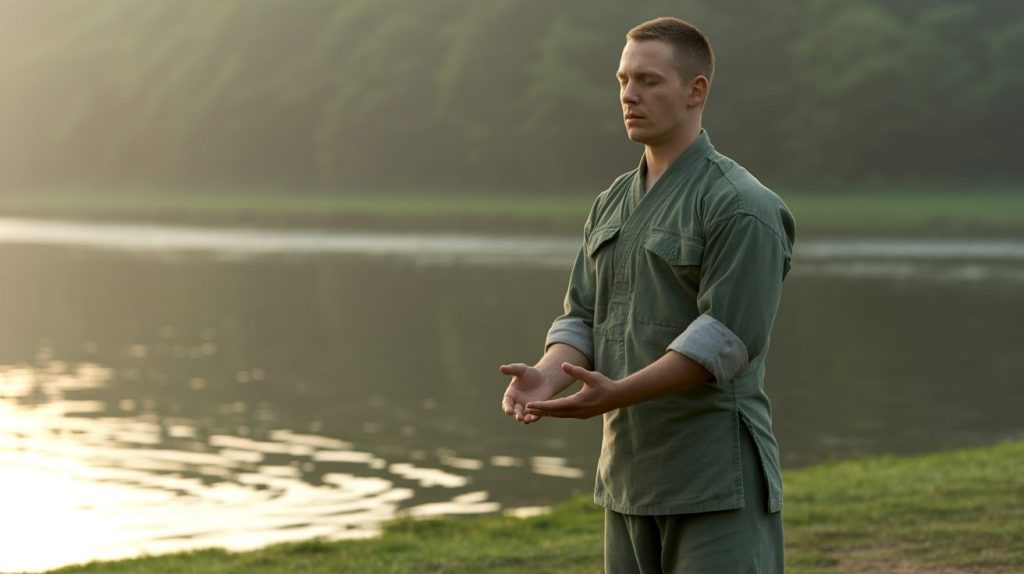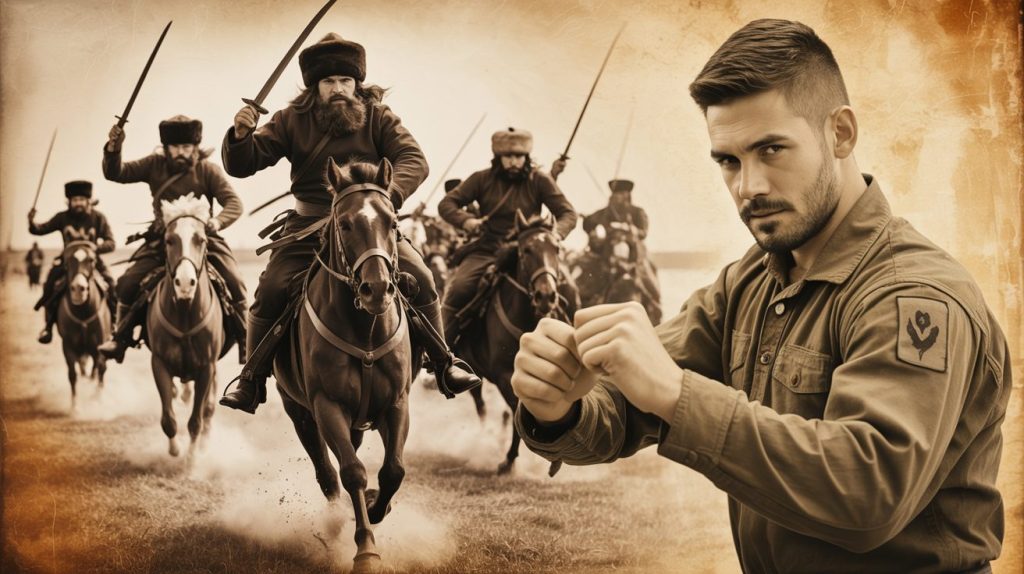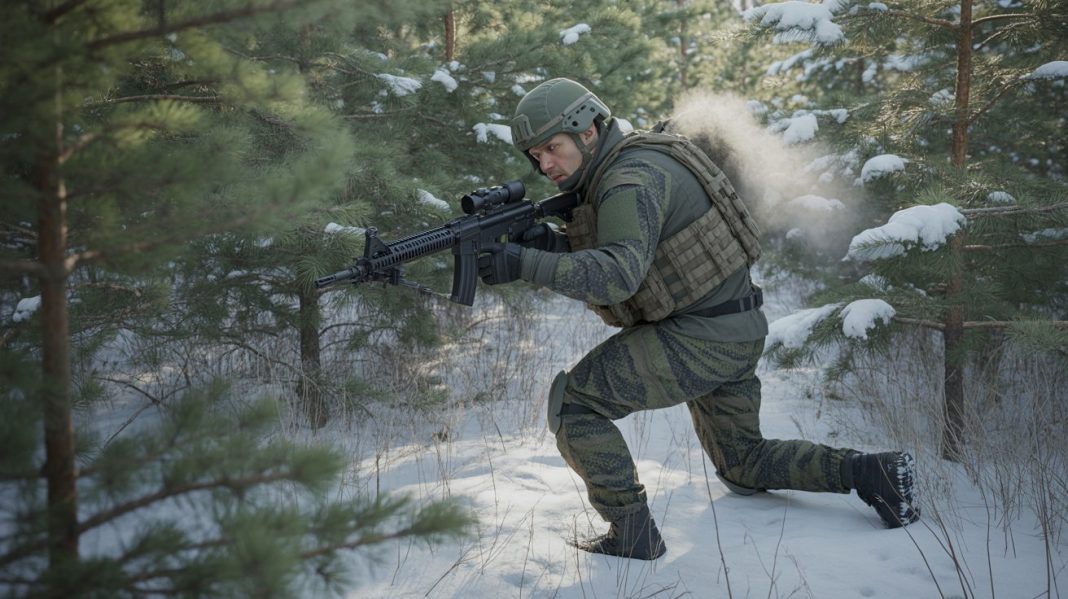Discover the true origins of Slavic Systema, the Russian martial art used by special forces, its philosophy of breath and relaxation, the controversies over its age and legitimacy, and how you can train its principles for self-defense and modern combatives.
What is Systema?
Systema (from Russian Система, transliterated “Sistema”) literally means “The System”.
It describes a Russian/Slavic martial art/combat system that emphasizes natural movement, breathing, relaxation, adaptability, and minimal rigid structure.
Training may cover hand-to-hand, grappling, disarms, weapons, situational survival, and psychological/physiological conditioning.
Origins & Historical Claims
Early roots
- Many schools claim Systema roots dating to ancient Slavic warrior traditions — for example, some state that Russian warriors defended vast, diverse terrain facing invaders (Vikings, Mongols, etc.) and developed versatile combat methods.
- Some sources place beginnings around the 10th century (or earlier) within the broader context of Russian/Slavic martial culture.
- Others note that during the Soviet era many folk combat arts were suppressed, merged, or transformed under state-military programs.
Modern development
- After the Soviet Union’s collapse (early 1990s), several martial systems branded as “Systema” emerged and spread internationally.
- Prominent modern names: Mikhail Ryabko and Vladimir Vasiliev (credited with spreading their version of Systema globally).

Controversies & Legitimacy – Is it “real”?
The controversies
- Because many of the historical claims (10th century, Cossack origins) are not well-documented in academic martial-arts history, there is considerable debate about how ancient Systema really is.
- Some critics say modern “Systema” is more a brand or marketing umbrella for several disparate Russian combative systems rather than one unified ancient lineage.
- There’s confusion among what’s bona-fide “Systema” vs other Russian military combatives (e.g., Combat Sambo, Rukopashny Boi).
The legitimacy angle
- If you define “real martial art” as having an ancient, unbroken, well-documented lineage (like some Asian arts), Systema doesn’t fully check those boxes.
- But if you define “martial art” as a system of combat training that is effective, adaptable, and taught formally, then it is legit: modern versions have been used by Russian military/special forces, taught to civilians, and spread worldwide.
- Important: A big aspect is that it emphasises principles (relaxation, breathing, posture, movement) rather than fixed “forms” or katas. That’s a departure from many older arts.
Are there different versions? Do all Slavic countries have their variant?
- Yes — there are multiple schools/brands of what is called “Systema”. For example: Systema Kadochnikov, Ryabko Systema, ROSS (Russian Domestic Self-Defence System) etc.
- These different branches vary in emphasis (military vs civilian, striking vs weapons vs internal training).
- Do all Slavic countries have their own version? Not necessarily in the sense of a formal “Slavic Systema” in every country. The predominant origin is Russia / Russian-speaking/Slavic territory. While Ukraine, Belarus, etc share Slavic cultural heritage, the formal systems under the name “Systema” mostly trace to Russia.
- So it’s accurate to say there are Slavic roots, but you’ll find more “Systema” schools in Russia (and internationally) than distinct systems per Slavic country under that exact brand.

Core principles & training methods
Here are the typical principles and training elements:
- Breathing: controlling breath to reduce tension, manage stress, maintain calm under pressure.
- Relaxation / structure: being relaxed in movement rather than stiff; allowing fluidity.
- Movement and posture: natural body movement, using the body’s structure rather than rigid stances.
- Adaptability: responding to unpredictable situations (attacks, weapons, multiple opponents).
- No fixed kata: Rather than predefined sequences, training uses drills, partner work, scenario work.
Training methods might include:
- Drills with varying speed and resistance.
- Partner work where one attacks, other responds, then swap.
- Stress/surprise drills (multiple opponents, weapons, confined spaces).
- Breathing and relaxation exercises before/after physical work.
- Focus on movement, footwork, body alignment rather than flashy technique
Usefulness for Self-Defense, Military, Law Enforcement
- Because of its emphasis on adaptability, multiple threats, weapons, and real-world scenarios, Systema can be very effective for self-defense, law enforcement, and military use.
- Its roots (or at least its modern forms) come from Russian special operations, so relevance for high-risk environments is built-in.
- That said:
- For simple street self-defense, someone might prefer a system with more focus on easy takedowns, escapes, strikes. Systema is broader and has a strong internal/psychological element.
- Training quality varies widely. Because many schools brand themselves “Systema”, the standard of instruction matters a lot.
- Because it lacks rigid technique lists, progress requires good coaching, and you must internalise principles rather than rote moves.

How Long to Get Good & Training Ideas
f you want to get functional in Systema for self-defense:
- Basic proficiency (movement, breathing, awareness, simple responses): 6–12 months with consistent training (2-3 times/week).
- Intermediate (able to defend in realistic scenarios, adapt, stay calm under stress): 1–2 years.
- Advanced (fluid, confident with weapons, multiple opponents, internal mastery): 3+ years, perhaps much more.
Training ideas:
- Drill: “breathing + relaxation” – 5 minutes of controlled exhale/inhale, then partner light strikes, you respond relaxed.
- Movement drill: one partner advances slowly, you move the defender’s body, practice posture/stance shift, then increase speed.
- Scenario drill: attacker with a simple weapon (stick), you defend, reverse position, respond; then increase complexity.
- Escape drill: start in bad position (mounted, pinned), practice getting up while breathing, moving, using body structure not brute strength.
- Multi-attacker drill: 2 or 3 partners attack in turn; you must move, keep breathing, manage distance, escape.
Truth Check: How Old is it Really?
While many sources claim ancient roots (10th century, Cossacks, Slavic warriors), the concrete historical evidence is limited and debated.
It’s safe to say the modern brand “Systema” as known internationally emerged in the late 20th century (post-Soviet era) and many systems were formalised in the 1990s.
Therefore: it likely draws on older Slavic combat traditions, military hand-to-hand, wrestling, folk arts, but the specific systemised “Systema” is fairly modern.
Summary & Why It Matters
Slavic Systema is a unique martial system that blends physical, psychological, environmental, and situational combat training. Its principles (breathing, relaxation, movement, adaptability) stand out compared with many traditional martial arts.
Because of its modern evolution, brand diversity, and somewhat murky historic claims, it invites questions — but that doesn’t diminish its value.
If you train it seriously, you’ll gain more than just “techniques” — you’ll gain a mindset and system.


